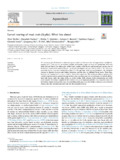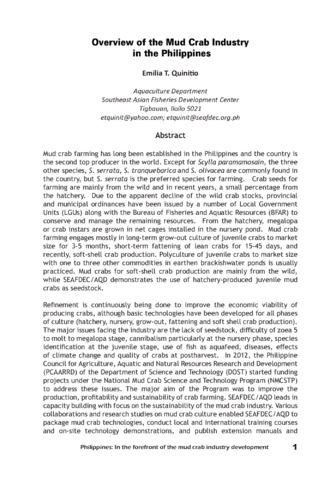Pond culture of mud crab (Scylla serrata): an economic analysis.
| dc.contributor.author | Samonte, Giselle P.B. | |
| dc.contributor.author | Agbayani, Renato F. | |
| dc.date.accessioned | 2011-06-22T09:35:26Z | |
| dc.date.available | 2011-06-22T09:35:26Z | |
| dc.date.issued | 1992 | |
| dc.identifier.uri | http://hdl.handle.net/10862/356 | |
| dc.description.abstract | The study compares the profitability of mud crab pond culture with existing crab fattening practices in Iloilo, Philippines. Monoculture of Scylla serrata at stocking densities of 5,000, 10,000, 15,000 and 20,000 pcs/ha are compared for economic feasibility. Highest return on investment, return to equity, and shortest payback period were obtained from a stocking density of 5,000/ha. Production cost ranged from 35.78/kg at 5,000/ha stocking density to 55.05 P/kg at 20,000 stocking density. Partial budgeting showed that no incremental benefit accrued from increasing the stocking density to 10,000/ha. Discounted economic indicators, such as net present value, benefit-cost ratio and internal rate of return, were also highest at 5,000/ha stocking density. | en |
| dc.language.iso | en | en |
| dc.relation.ispartof | In: Angell, C.A. (ed.). Report of the Seminar on the Mud Crab Culture and Trade, 5-8 November 1991, Surat Thani, Thailand. Madras, India: Bay of Bengal Programme. pp. 225-234 | en |
| dc.subject | Philippines | en |
| dc.subject | Scylla serrata | en |
| dc.subject | Philippines, Panay I., Iloilo | en |
| dc.subject.lcc | VF SP 148 | |
| dc.title | Pond culture of mud crab (Scylla serrata): an economic analysis. | en |
| dc.type | Conference paper | en |
| dc.citation.spage | 225 | |
| dc.citation.epage | 234 | |
| dc.subject.asfa | aquaculture economics | en |
| dc.subject.asfa | aquaculture systems | en |
| dc.subject.asfa | crab culture | en |
| dc.subject.asfa | pond culture | en |
| dc.subject.asfa | stocking density | en |
| dc.subject.scientificName | Scylla serrata | en |
Files in this item
| Files | Size | Format | View |
|---|---|---|---|
|
There are no files associated with this item. |
|||
This item appears in the following Collection(s)
-
Conference Proceedings [299]



